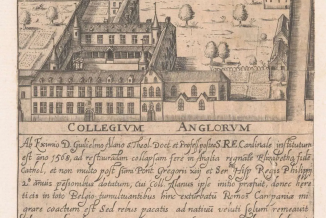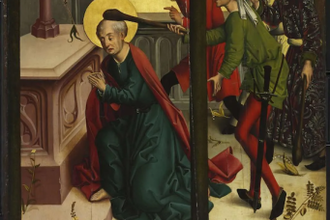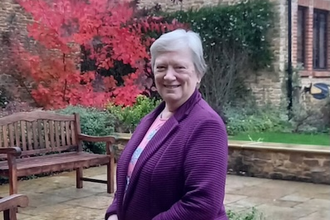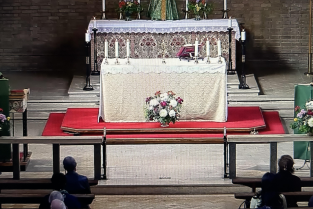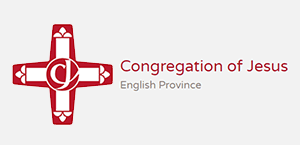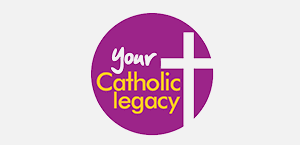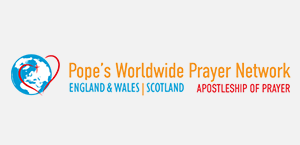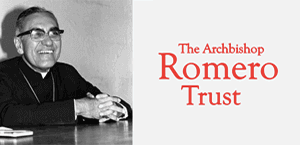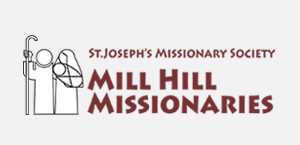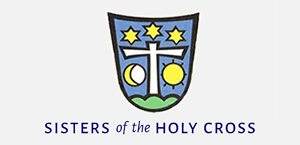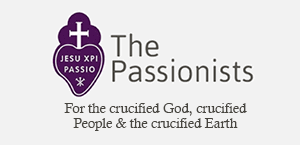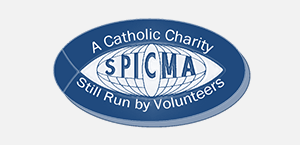Gospel in Art: When an ox that has fallen into a well, will you not immediately pull him out
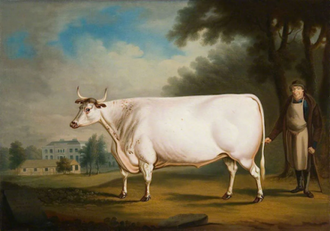
The White Ox of Nannau, by Daniel Clowes, 1824, oil on panel © By permission of Amgueddfa Cymru Museum Wales, National Museum Cardiff
Source: Christian Art
Gospel of 31 October 2025
Luke 14:1-6
One Sabbath, when Jesus went to dine at the house of a ruler of the Pharisees, they were watching him carefully. And behold, there was a man before him who had dropsy. And Jesus responded to the lawyers and Pharisees, saying, 'Is it lawful to heal on the Sabbath, or not?' But they remained silent. Then he took him and healed him and sent him away. And he said to them, 'Which of you, having a son or an ox that has fallen into a well on a Sabbath day, will not immediately pull him out?' And they could not reply to these things.
Reflection on the painting
Again in today's Gospel reading, Jesus turns to the natural world to make his point, just as he did yesterday mentioning a hen and chicks. This time, he speaks of an ox or a donkey that has fallen into a well on the Sabbath. His question is simple: "Who among you would not pull it out straight away?" By using such a down-to-earth image, Jesus exposes the hardness of heart of those who value rules over compassion. The ox, a creature of service (to the farmer), becomes a mirror for humanity itself: burdened, fallen, in need of mercy. Once again, Jesus shows that God's law is not meant to trap but to restore and to get us back on the road!
In the time of Jesus, oxen were among a family's most valuable possessions. They were essential for ploughing fields, transporting goods, and providing food. Owning an ox signified stability and livelihood; losing one could mean economic ruin. That is why Jesus' question in today's Gospel is so strikingly practical: "If your ox falls into a well on the Sabbath, who among you would not immediately pull it out?" Of course, everyone would, seen the value of an ox.
Through this humble image of the ox, he reminds us that love, not legalism, is at the heart of God's kingdom. In art history, oxen were often given a central place in paintings. They are portrayed with broad shoulders, shining hides, and calm, intelligent eyes. These images were not only demonstrations of artistic skill but also reflections of social standing, the proud ox standing for the wealth, stability, and prosperity of its owner. That is how we come to our painting today, The White Ox of Nannau, 1824. The Nannau Ox was slaughtered and roasted to mark the 21st birthday of Robert Williames Vaughan on 25 June 1824, part of a grand celebration held at Nannau, in north Wales. The ox came from an ancient herd of white cattle long bred on the estate, and beside it in the painting stands the family's cowman, Sion Dafydd. The painting made sure the occasion was remembered far and wide. Bells rang, fireworks lit the skies, cannons fired, and food and drink were shared generously with the local poor. Thus this ox became a symbol of gratitude and community.
In the background of the painting, we can see Nannau House, a stately neoclassical home built in the 1790s, and a large temporary pavilion erected specially for the feast, a timber structure covered in canvas and thatch, built to host nearly two hundred guests. The painting, made by Clowes of Chester, who specialised in portraits of animals, was one of several commissions celebrating the family's wealth and heritage. Yet beyond its grandeur, the scene also captures a moment of thanksgiving, a community gathered in joy around the fruits of the land.
LINKS
Gospel in Art: https://christian.art/
Today's Reflection: https://christian.art/daily-gospel-reading/luke-14-1-6-2025/




